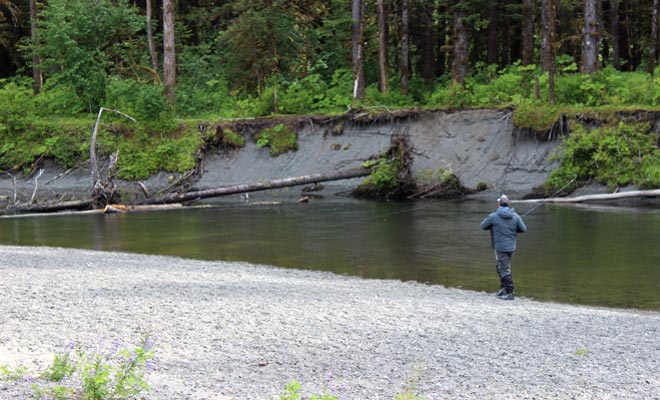Fish and wildlife resources in Alaska
With more than 600,000 sportfishing, hunting, and trapping licenses purchased across the state each year, it’s clear that the outdoors is vital to Alaskans and that is why the Alaska Board of Fisheries exists to manage this resource. Fish and wildlife resources provide outdoor activity, feed families, entice visitors from around the world, and help bring billions of dollars into the state economy.
Alaskans themselves play a central role in fisheries and wildlife management. Alaska’s fish and game management system—unique worldwide—depends on Alaskans active involvement to keep our resource populations healthy.

That is because in Alaska fish and wildlife resources are held in public trust. They belong to all Alaskans. The relationship is rooted in the Alaska Constitution. In the Constitution’s Article 8, Natural Resources, the words “people,” “person,” or “public” appears 20 times. Provisions like “common use,” “sustained yield,” and “for the maximum benefit of its people” provide direction for resource management.
Alaska Board of Fish
To that end, the Alaska Board of Fisheries (Board), a group of seven Alaskans selected by the Governor and confirmed by the state legislature, helps design opportunity for the harvestable surplus. Board members set fisheries-management policy by deciding when and where specific user groups can fish, what gear may be used or to take other regulatory action based on input from members of local advisory committees, the Alaska Department of Fish and Game (ADF&G), the general public, and more.
The Alaska Board of Fisheries tackles every region and species of fish across the state. Each region is considered on a three-year cycle. The Board routinely considers up to 400 regulatory proposals every year.
It’s a robust process that calls for input from each of these groups and, I believe, it makes our regulatory process second to none.
The state’s 84 advisory committees, made up of local residents living in communities across Alaska, have intimate knowledge of the fish and wildlife resources in their backyards. With state assistance, they provide an important source of advice and support for Board members.
In addition to performing research to optimize fisheries, scientists at the ADF&G monitor runs and report their findings to the Board. They advise the Board on optimum run goals for water systems and more. ADF&G’s Subsistence Division lends expertise on common and traditional uses of the resource. The Board’s Support section supports the Board and helps ensure everyone has an opportunity to participate in the process.
AK Fish and Game Management Process
Every year the Board, through the ADF&G Board’s Support section, asks the public for regulatory proposals according to a preset schedule. Once received, the proposals are published for all to review, the Board solicits comments, receives ADF&G research and input, and conducts open meetings where old rules are confirmed or new rules are created.
ADF&G encourages everyone to take part. Whether it is submitting a proposal, commenting to the Board, serving on an advisory committee, or seeking an appointment as a Board member, your involvement matters.
The Board set its deadline of April 10 for all Cook Inlet finfish, Kodiak finfish and Statewide (except Southeast and Yakutat) King and Tanner crab proposals. The Board’s sister board, the Board of Game, is soliciting proposals for the Arctic, Western, and Interior regions which are due by May 1.
To learn more about the fish and game regulatory system, please visit our website at www.adfg.gov. Our Board’s Support section is also hosting public information sessions.
Alaska Board of Fish Public Information Sessions
• March 7, 2019, Thursday, 7-9 pm, Menard Sports & Events Center, Meeting Room #3, 1001 S Clapp St, Wasilla
• March 13, 2019, Wednesday, 6-8 pm, William Jack Hernandez Sport Fish Hatchery, 941 N Reeve Blvd, Anchorage
• April 5, 2019, Friday, 4-5 pm, and April 6, Saturday, 2-3 pm at the Great Alaska Sportsman Show, Sullivan Arena, 1600 Gambell Street, Anchorage
Glenn Haight is the Executive Director for the Alaska Board of Fisheries. Glenn has worked in this capacity with the Alaska Department of Fish & Game since 2013. Previously he worked extensively in a variety of economic development fields with the State of Alaska and the Alaska Sea Grant program.
